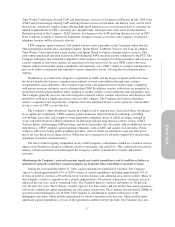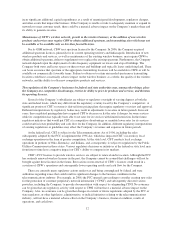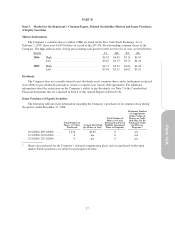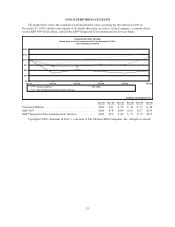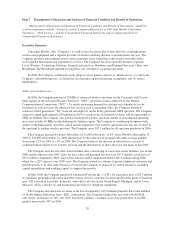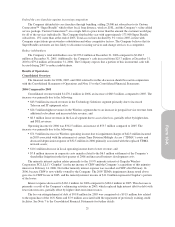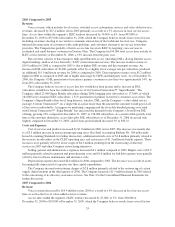Cincinnati Bell 2006 Annual Report Download - page 130
Download and view the complete annual report
Please find page 130 of the 2006 Cincinnati Bell annual report below. You can navigate through the pages in the report by either clicking on the pages listed below, or by using the keyword search tool below to find specific information within the annual report.Item 7. Management’s Discussion and Analysis of Financial Condition and Results of Operations
“Management’s Discussion and Analysis of Financial Condition and Results of Operations,” should be
read in conjunction with the “Private Securities Litigation Reform Act of 1995 Safe Harbor Cautionary
Statement,” “Risk Factors,” and the Consolidated Financial Statements and accompanying Notes to
Consolidated Financial Statements.
Executive Summary
Cincinnati Bell Inc. (the “Company”) is a full-service local provider of data and voice communications
services and equipment and a regional provider of wireless and long distance communications services. The
Company provides telecommunications service primarily on its owned local and wireless networks with a
well-regarded brand name and reputation for service. The Company has five reportable business segments:
Local, Wireless, Technology Solutions (formerly referred to as Hardware and Managed Services), Other, and
Broadband. The Broadband segment no longer has any substantive, on-going operations.
In 2006, the Company continued to make progress on its primary objectives, which were to: (1) add to the
Company’s growth businesses, (2) defend its core franchise against increasing competition, and (3) reduce
indebtedness.
Add to growth businesses
In 2006, the Company purchased 20 MHz of advanced wireless spectrum for the Cincinnati and Dayton,
Ohio regions in the Advanced Wireless Services (“AWS”) spectrum auction conducted by the Federal
Communications Commission (“FCC”). To satisfy increasing demand for existing voice minutes of use by
customers as well as to provide enhanced data services such as streaming video, the Company intends to
construct a third generation (“3G”) network and deploy it on the newly purchased AWS spectrum. The Company
expects to spend approximately $30 million in 2007 to construct the 3G network so that it will be operational in
2008. In addition, the Company also purchased advanced wireless spectrum outside of its traditional operating
area, most notably 10 MHz for the Indianapolis, Indiana region. The Company is considering its options with
respect to the Indianapolis spectrum, which include expansion of its wireless operations into this area or lease of
the spectrum to another wireless provider. The Company spent $37.1 million for all spectrum purchases in 2006.
The Company increased wireless subscribers by 32,000 subscribers, or 6%, from 496,000 at December 31,
2005 to 528,000 at December 31, 2006 aided in part by the reduction of postpaid subscriber average monthly
churn from 2.2% in 2005 to 1.6% in 2006. The Company believes the increase in subscribers is a result of
continued improvements to its wireless network and the introduction of more attractive rate plans in late 2005.
The Company now has five data center facilities after constructing two new data center facilities, one in late
2006 and the other in early 2007. Sales for data center and managed services were $47.4 million, an increase of
$10.3 million compared to 2005. Sales of the telecom and IT equipment totaled $162.2 million during 2006,
which was a 28% increase over 2005 sales. The Company intends to continue to pursue additional customers and
growth specific to its data center business, for which the Company is prepared to commit resources, including
capital expenditures and working capital, to support this growth.
In May 2006, the Company purchased Automated Telecom Inc. (“ATI”) for a purchase price of $3.5 million
to expand its geographical presence in order to better serve its customers located outside of the greater Cincinnati
area. ATI is based in Louisville, Kentucky, with offices also located in Grand Rapids, Michigan, and St. Louis,
Missouri. ATI is a reseller of, and maintenance provider for, telephony equipment.
The Company increased data revenues in the Local segment by $19.0 million primarily due to the addition
of 36,000 Digital Subscriber Line (“DSL”) subscribers. The Company finished the year with 198,000 DSL
subscribers, an increase of 22% over 2005. In-territory primary consumer access line penetration of its DSL
product increased to 34% in 2006.
20



